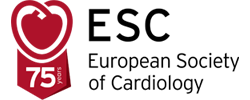The cardiologist’s perspective
 “The management of HF is very intricate and its complexity is the reason why an MDT approach is required. Patients often have multiple comorbidities and are at high risk of mortality and morbidity. The challenge is to balance all the different aspects of management – physical, emotional and social – to improve quality of life and reduce mortality and hospitalisation. If we adopt an MDT approach and work together, we can address these challenges.
“The management of HF is very intricate and its complexity is the reason why an MDT approach is required. Patients often have multiple comorbidities and are at high risk of mortality and morbidity. The challenge is to balance all the different aspects of management – physical, emotional and social – to improve quality of life and reduce mortality and hospitalisation. If we adopt an MDT approach and work together, we can address these challenges.
MDTs should comprise the whole range of individuals involved in the care of HF patients, including HF nurses, cardiologists, general practitioners, internal medicine doctors, paramedics, physiotherapists, pharmacists, psychologists and social workers to ensure effective coordination along the HF patient’s journey.
The cardiologist is an important part of this team. He or she can ensure that the cardiac elements of the HF syndrome, which are central to the disease, are well addressed according to the clinical guidelines. Pharmacotherapy for HF requires time for titration of drugs to optimum doses and for the monitoring of side effects, and patients need a lot of support and education about this. The cardiologist also has the responsibility of communicating effectively with different specialties so that other elements of care, particularly the treatment of comorbidities, are identified and achieved satisfactorily.
In the HF guidelines, using an MDT approach currently has a Grade IA recommendation1 and I expect that new guidelines will further endorse the use of shared care.”
The heart failure nurse specialist’s perspective
 “Nurses are expanding their role and responsibilities in today’s clinical practice, and are becoming an increasingly valuable member in the MDTs. Many HF nurses work across geographical boundaries, reviewing patients in hospital, within an outpatient setting, and also in patients’ own homes. The home visits are where their biggest impact can be seen, not just on the delivery of a patient-centred approach to management, but also on outcomes.
“Nurses are expanding their role and responsibilities in today’s clinical practice, and are becoming an increasingly valuable member in the MDTs. Many HF nurses work across geographical boundaries, reviewing patients in hospital, within an outpatient setting, and also in patients’ own homes. The home visits are where their biggest impact can be seen, not just on the delivery of a patient-centred approach to management, but also on outcomes.
Nurses spend time assessing the patient’s holistic needs and providing a tailored approach to their management. Crucially, nurses use this time to build a rapport with the patient, and ensure both the patient and family members have enough information for optimal self-care. Nurses often also coordinate the services of other allied professions, such as referring the patient for social work consultation or to cardiac rehabilitation programmes. Working closely with the primary physician (cardiologists or general practitioner), the HF nurse can act as a lynchpin, supporting and guiding the patient as he/she navigates their healthcare services.
Part of this teamwork involves good internal communication to make sure that there is alignment in the messages given to patients because this may improve adherence to prescribed treatments. A shared care approach is also essential in palliative care – within disciplines, across disciplines and across therapeutic areas – every MDT member has a vital role in contributing towards achieving optimum care for the patient.
We are always looking at ways to improve the MDT framework and this remains a target for us all in the future.”
- PonikowskiP, et al. Eur Heart J 2016;37:2129–2200.

 Our mission: To reduce the burden of cardiovascular disease.
Our mission: To reduce the burden of cardiovascular disease.